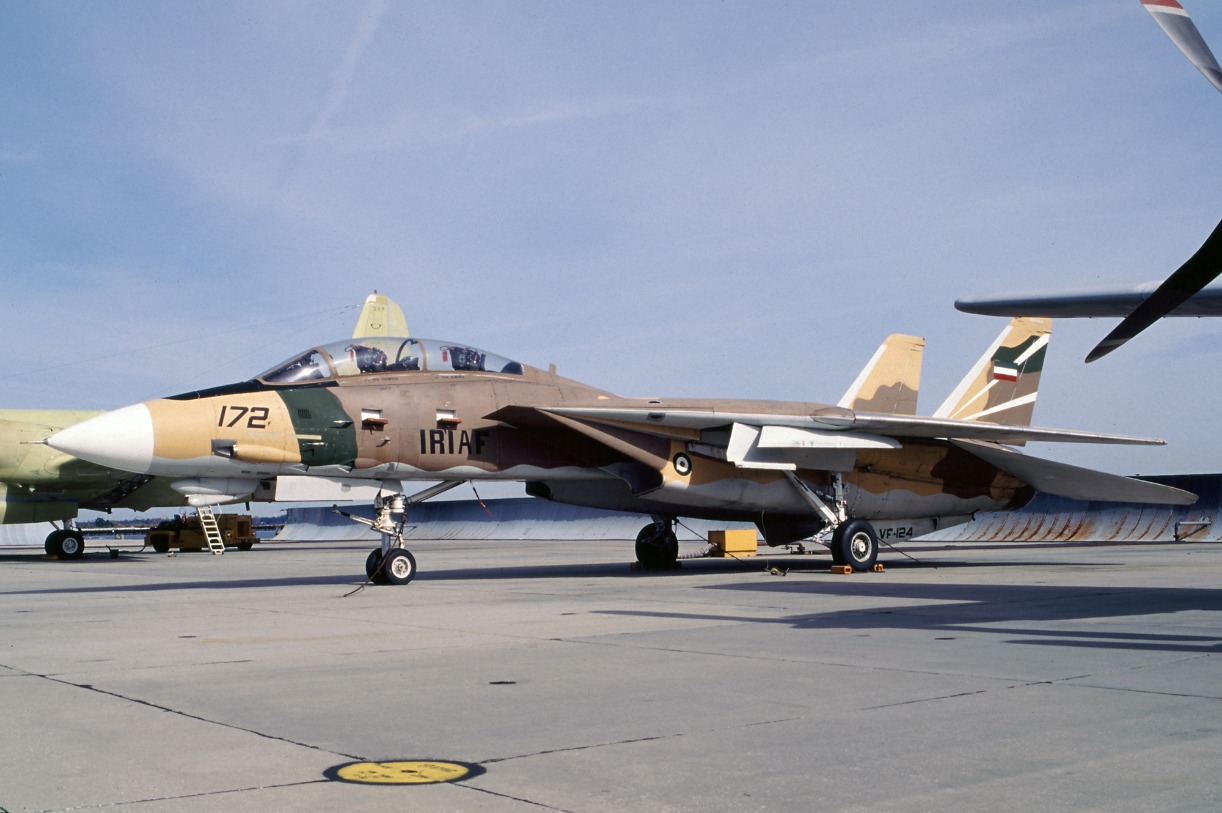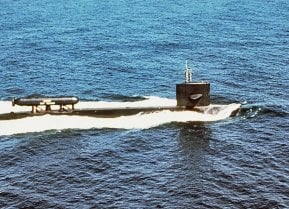F-14 Tomcat: The Navy Really Misses the 'Top Gun' Fighter Plane
The retirement of the F-14 Tomcat has left a significant capabilities gap in the U.S. Navy's ability to counter long-range anti-ship threats, particularly in the face of advanced Anti-Access/Area Denial (A2/AD) systems deployed by countries like China.
What You Need to Know: The retirement of the F-14 Tomcat has left a significant capabilities gap in the U.S. Navy's ability to counter long-range anti-ship threats, particularly in the face of advanced Anti-Access/Area Denial (A2/AD) systems deployed by countries like China.

-The F-14's long-range intercept capabilities and its effectiveness against maritime strike bombers like the Soviet Tu-16 and Tu-22M made it ideal for defending aircraft carriers from over-the-horizon threats. Modern replacements like the F/A-18 Hornet and F-35B/C lack the range and specific capabilities of the Tomcat, forcing carriers closer to danger.
-Reintroducing an updated F-14 style-plane could enhance carrier group defenses against emerging threats.
F-14 Tomcat: The Missing Link in America's Naval Defense
There was a time when the United States military, particularly the Navy, understood the importance of possessing long-range strike capabilities. Specifically with its aircraft carrier-based fleet of warplanes. The end of the Cold War and the subsequent collapse of the Soviet Union is widely viewed as a momentous period in history. It was America’s most significant (bloodless) victory in a major conflict. Sadly, the seeds for America’s ultimate strategic defeat were sown in the final, victorious moments of the Cold War.
Because that was the time at which the United States made several decisions about key weapons systems and strategies that would define its overall disposition for the next half century.
Many, ultimately short-sighted, decisions were made by America’s policymakers who were riding the euphoria of the end of the Cold War, and who had come to believe in the “end of history” thesis that pervaded elite circles at that time. Next-generation weapons systems designed to fight—and defeat—the Soviet Union in war were or the country’s previous commitment to building them was significantly reduced. Systems like the Seawolf-class submarine were never built out the way they were intended to be.
Or platforms like the replacement for the A-6 Intruder, the A-12 Avenger II, were simply scrapped.
Then, there is the curious case of the F-14 Tomcat, a plane, that at least in a modernized configuration, the U.S. Navy would love to have today.
The Navy Needs a New F-14 Tomcat to Counter A2/AD
Another plane that had become the workhorse of the US Navy during the heady days of the Cold War was the F-14 Tomcat.
Made famous by Tom Cruise’s legendary 1986 film, Top Gun, the F-14 Tomcat made its final flight for the US Navy in 2006. All the airframes were replaced by the F/A-18 Hornet. Today, the Navy is working prodigiously to replace its Hornet fleet with the F-35B variant that has vertical takeoff and landing (VTOL) capabilities.

The only problem is that both the Hornet and the F-35B lack the range that its Cold War era predecessors, such as the Tomcat, had.
For instance, the moment that the Navy opted against replacing the A-6 Intruder with the A-12 Avenger or when the Navy allowed for the Tomcats to be retired and replaced with the Hornets, the service basically cut its operational range “800 [nautical miles] in 1996 to just 500 nm by 2006,” as Dr. Jerry Hendrix assessed in an excellent 2015 report for the Center for a New American Security. That means that aircraft carriers must get precariously closer to targets hardened by anti-access/area denial (A2/AD) defense systems.
This, of course, places the air wing and, more importantly, the aircraft carrier they are deploying from in grave danger. Because A2/AD systems—especially China’s—are specifically designed to disable or, as the Chinese war planners hope, destroy US aircraft carriers, thereby negating a major weapon the Americans use for power projection.
If the United States had seriously considered keeping its next-generation, longer-range warplanes, such as the F-14 Tomcats, life might have been much easier for American flat tops. The Tomcats could not only engage in longer-range missions than their F/A-18 successor, but the F-14 was made-to-order for rebuffing the anti-ship capabilities of the Soviet era Tu-16 and Tu-22M long-range maritime strike bombers.
These Soviet planes were armed with anti-ship missiles and could wreak havoc on US aircraft carriers, much as China’s A2/AD rocket forces will wreak on US carriers in a conflict with the United States. Maintaining this capability today would have augmented the survivability of US flat tops in an A2/AD contested environment.
Making the Turkey Fly
Nicknamed the “Turkey” by the sailors who worked around these warplanes for its “awkward” appearance when landing on a carrier’s flight deck, the F-14 Tomcat was designed by the Grumman Corporation and was piloted by a pilot and radar intercept officer. Two Pratt & Whitney engines allowing for more than 20,000 pounds of static thrust powered the aircraft. It could engage hostile targets from as far as 90 miles away, just over-the-horizon—meaning that threats to American carriers would have been seriously mitigated well before they were within visual range of those carriers.

The Tomcat’s fastest speed was clocked in at over 1,500 miles per hour, making it one of the fastest planes in America’s air fleet. It was armed with a 20-mm cannon, four AIM-7 Sparrow and four AIM-9 Sidewinder missiles. Or the great warbird could have been outfitted with six AIM-54 Phoenix and two AIM-9 air-to-air missiles.
Even today, this plane would be hugely helpful to the US Navy as it battles the threat of A2/AD to tis carriers (since the Navy is foolishly ensconced in carrier cult).
Of course, the Navy would probably assert that the Tomcat would be useless against today’s A2/AD threats. After all, the plane was designed to repel attacks at a distance from the Tu-16 and Tu-22M. Although China’s anti-ship capabilities are not merely relegated to the missile and hypersonic domains. Their Xian H-6 is a total rip-off of Russia’s Tu-16. The Xian H-6 will ultimately be deployed by Beijing to attack American carriers as part of China’s larger strategy of sinking at least two American carriers at the outset of any conflict.
So, having a system like the Tomcat would be very helpful.
A Severe Capabilities Gap: the F-14 Tomcat
In fact, some private wargamers have conducted wargames showing that the F-14 Tomcats still are the best options for defending American carriers from antiship attacks.
Too bad that those systems don’t exist anymore. Sure, the Navy today employs multiple other systems that were intended to replace the F-14. But nothing is quite as good at countering anti-ship missile attacks from long-range as the F-14 Tomcat. In fact, there was a concerted effort by the defense industry to proffer an upgraded Tomcat—the Super Tomcat—but the Navy had its sights set on the aforementioned Hornet and, eventually, F-35C.
And while the F-35C is a technically superior warplane to the Hornet, there is a critical needs gap within the defensive systems of the US aircraft carrier fleet. That need could have been filled by the F-14 Tomcat or, possibly its successor, the proposed Super Tomcat.
Instead, the Navy lacks the capabilities the F-14 Tomcat once provided at the same time that direct threats to the aircraft carrier are at an all-time high (even higher than the Soviet Navy’s threat to flat tops during the Cold War).
Author Experience and Expertise: Brandon J. Weichert
Brandon J. Weichert, a National Interest national security analyst, is a former Congressional staffer and geopolitical analyst who is a contributor at The Washington Times, the Asia Times, and The-Pipeline. He is the author of Winning Space: How America Remains a Superpower, Biohacked: China’s Race to Control Life, and The Shadow War: Iran’s Quest for Supremacy. His next book, A Disaster of Our Own Making: How the West Lost Ukraine, is due October 22 from Encounter Books. Weichert can be followed via Twitter @WeTheBrandon.
All images are Creative Commons or Shutterstock.
From the Vault
Russia Freaked Out: Why the U.S. Navy 'Unretired' the Iowa-Class Battleships
Battleship vs. Battlecruiser: Iowa-Class vs. Russia's Kirov-Class (Who Wins?)


